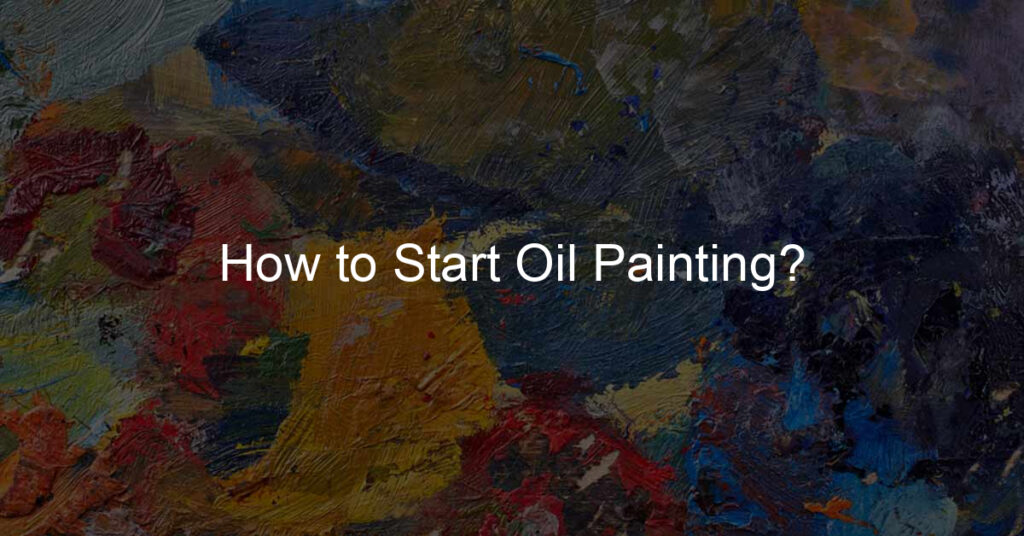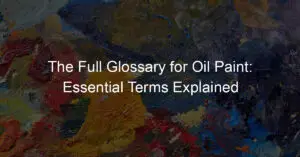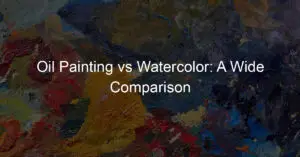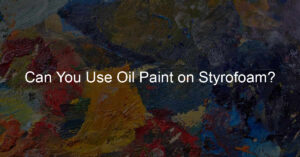When it comes to oil painting you’re probably already sold on the idea if you’ve ever experienced its rich textures and warm hues. Oil painting can be intimidating for beginners, especially with all the different types of supplies that are required – how many possible color variations exist? How can anyone ever learn them all? Understanding the basic supplies needed is helpful in simplifying the learning process.
Oil Paints
Oil paint is made up of linseed oil, pigment, and resin. There are hundreds of individual colors to choose from so understanding the properties of each pigment is important when it comes time to choose your palette.
Pure pigments come in three different types: opaque, transparent, and translucent. Transparent paints allow light to pass through them resulting in bright lighter values while absorbing light causes darker more saturated pigments.
Opaque paints naturally limit the amount of light that passes through by blocking it completely making them great for covering large areas quickly but they aren’t as bright as pure pigments.
The third type – translucent – allows some light to pass through resulting in a mixture between the two.
Choosing the right colors becomes a combination of preference and knowledge. It’s easy to just grab a great looking color from a store shelf but what if it was mixed with something you didn’t want? That bright crimson may have an orange tint that gives it a warm look, but not the one you were going for. While this is only a minor inconvenience when buying single paints, mixing multiple colors together can result in unpredictable mixtures.
So take those extra few minutes – even though they can be very frustrating – to find out what your paint actually contains before grabbing the nearest container.
Oil Paints Mind Map
To learn more about each type of oil paint visit our mind map below:Linseed Oil
There are two different types of linseed oil: raw and boiled. Raw linseed oil has a yellow tint that can be reduced by adding walnut or safflower oil which will help the paint dry faster as well as slow down the drying time for those wanting to work slowly.
Boiled linseed oil does not contain any color but still provides many of the same benefits as raw linseed oil such as its resistance to mildew and rot. It also dries slightly faster than raw but not enough to make it unusable.
Pigment
There are hundreds of opaque pigments available and each one is made up of either natural or synthetic materials. Natural earth pigments come from minerals that are mined from the ground while synthetic pigments are created in labs.
Transparent and opaque pigments each come in two different types: genuine and imitation. The main difference between the two is their durability; genuine pigments will resist fading better than imitation but they can be more expensive.
Resin
Oil paints without resin dry much faster making them easier to handle while oils with resin don’t dry as quickly allowing for longer working times which can create richer effects such as glazing or scumbling. Resin also increases the paint’s durability when it fully dries.
What do you mix oil paint with?
You should only add linseed oil to your paint. Adding other oils will alter its drying time making it dry either too quickly or not at all. Resin is already mixed into the paint so you don’t need to add that either!
When it comes to oil painting you’re probably already sold on the idea if you’ve ever experienced its rich textures and warm hues. However, understanding the different types of oil paints and knowing when to use them will better help you achieve your desired look. Before you go shopping for that perfect color palette make sure to do some research (online or in a bookstore) and ask questions if necessary!
What liquid do you use for oil paint?
Linseed oil is the only liquid you should add to your paint. Simply mix it in thoroughly with your palette knife or stirring stick. Any other liquids will alter the drying time of your paint which could ruin the whole painting!
While resin is already mixed into oil paints you can’t just add more! Adding too much resin will cause it to become stiff while adding too little will result in cracking and flaking. If that isn’t bad enough, adding resins other than linseed may affect its durability when fully dried! Make sure you do plenty of research before purchasing any type of resin for oil painting!
What do you use to thin out your OIL PAINTS?
Only add linseed to your paint – too much or too little resin will cause your oil painting to look odd. Make sure you don’t use anything other than linseed oil – no water, no gel mediums, nothing!
When it comes to oil paints most artists are either for or against them. Some find the rich texture and beautiful hues of oils irresistible while others see them as difficult to work with.
Understanding which type of paint is needed for each project can help ease any frustration that may come along with it so why not do some research before heading out to buy your supplies?


















